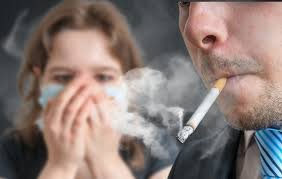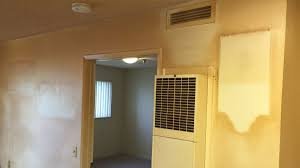



Comprehensive Guide to Removing Cigarette Smoke Odor: Composition and Professional Solutions Cigarette smoke odor is one of the most challenging indoor contaminants to eliminate due to its complex chemical composition and its ability to permeate porous surfaces. This odor is caused by a mixture of volatile organic compounds (VOCs), tars, and nicotine, which adhere to surfaces and embed themselves in fabrics, walls, and HVAC systems. Successfully addressing cigarette smoke odor requires understanding its nature and employing a combination of advanced cleaning methods, odor-neutralizing technologies, and preventive strategies to restore the affected space to a fresh, clean state.
Composition of Cigarette Smoke Odor
Cigarette smoke contains over 7,000 chemicals, including harmful substances such as formaldehyde, benzene, and ammonia. Among these, the primary contributors to the lingering odor are:
1. Tar and Nicotine Residue: These sticky substances adhere to walls, ceilings, furniture, and other surfaces, leaving a yellowish-brown stain and a persistent odor.
2. Volatile Organic Compounds (VOCs): VOCs like acrolein and toluene are released into the air and absorbed by porous materials, making them particularly difficult to remove.
3. Particulate Matter: Tiny smoke particles become airborne and settle into soft furnishings, carpets, and HVAC systems, continuing to release odor over time. The odor's resilience lies in its ability to infiltrate every crevice and bind to surfaces, requiring a multi-faceted approach for effective removal.
Professional Methods for Cigarette Smoke Odor Removal
1. Source Removal and Surface Cleaning** Removing the source of the odor is the first step in remediation. Professionals thoroughly clean all affected surfaces to eliminate tar, nicotine, and soot residues.
- Walls and Ceilings: Tar and nicotine residue are scrubbed using specialized alkaline cleaning agents to neutralize acidic smoke compounds. Stained surfaces are often repainted after applying a primer or sealant to encapsulate any residual odor.
- Hard Surfaces: Floors, countertops, and other hard surfaces are cleaned with degreasers and disinfectants designed to cut through smoke film.
2. Deep Cleaning Soft Furnishings and Carpets
Fabrics and carpets absorb smoke odor, making deep cleaning essential.
- Hot Water Extraction: Steam cleaning or hot water extraction effectively removes embedded particles and odors from carpets and upholstery.
- Dry Cleaning for Delicate Fabrics: Professional dry cleaning ensures that curtains, cushions, and other delicate items are deodorized without damage.
3. HVAC System Cleaning
The HVAC system often circulates smoke particles, spreading the odor throughout the property. Restoration teams clean ductwork using HEPA-filtered vacuums, rotary brushes, and antimicrobial treatments. In severe cases, ductwork may require sealing or replacement to prevent re-contamination.
4. Air Purification Technologies
Professionals employ advanced air purification systems to eliminate airborne odors:
- Air Scrubbers: Equipped with HEPA filters and activated carbon filters, air scrubbers remove both particulate matter and odor-causing VOCs from the air.
- Hydroxyl Generators: These devices produce hydroxyl radicals, which oxidize and neutralize smoke odor molecules safely, even in occupied spaces.
- Ozone Generators: Ozone treatment is highly effective for breaking down smoke molecules in unoccupied spaces, as ozone can be harmful to humans and pets. This method is ideal for severe contamination.
5. Thermal Fogging
Thermal fogging involves heating a deodorizing agent to create a dense fog that penetrates porous materials and neutralizes odors at their source. This technique replicates the path of cigarette smoke, ensuring comprehensive coverage.
6. Encapsulation
For surfaces like walls and subfloors that continue to release odor even after cleaning, encapsulation is a reliable solution. A sealing primer or specialized encapsulant is applied to trap smoke residue, preventing it from emitting odors.
7. Vapor Diffusers and Odor Counteractants
Vapor diffusers release odor-neutralizing agents into the air, breaking down VOCs and creating a fresh indoor environment. These diffusers are often paired with enzymatic or molecular odor counteractants that bind to smoke molecules, effectively neutralizing them.
8. Negative Pressure Systems
During the remediation process, negative pressure systems are used to draw contaminated air out of the property and replace it with clean, filtered air. This technique prevents cross-contamination and accelerates the deodorization process.
Recommended Products and Solutions
Professionals rely on a range of specialized products to tackle cigarette smoke odor effectively:
1. Enzyme-Based Cleaners: These break down organic smoke residues, particularly effective on fabrics and carpets.
2. Activated Charcoal Bags: Placed in smaller spaces, these absorb residual odors passively.
3. Odor-Sealing Primers: Products like Kilz Restoration Primer or Zinsser B-I-N are commonly used to seal and block stubborn smoke stains and odors on walls and ceilings.
4. Deodorizing Agents: Solutions like Benefect Botanical Deodorizer provide eco-friendly and non-toxic options for odor neutralization.
Benefits of Professional Intervention
Engaging professional services for cigarette smoke odor removal ensures:
1. Thorough Deodorization: Professionals have access to industrial-grade equipment and proven methods to completely eliminate odors rather than mask them.
2. Healthier Environment: Cigarette smoke contains harmful carcinogens that can linger in a property. Comprehensive cleaning improves indoor air quality, reducing health risks for occupants.
3. Preservation of Property Value: Smoke damage can significantly diminish property value. Restoration ensures the property is restored to a fresh, smoke-free state, enhancing marketability.
4. Efficiency and Expertise: Professionals understand the complexities of smoke odor removal and can tailor solutions to specific property needs, saving time and effort.
Challenges and Considerations
Cigarette smoke odor removal can be challenging due to:
- Severity of Contamination: Properties with long-term exposure to heavy smoking may require extensive cleaning and remediation efforts.
- Porous Materials: Odors embedded in porous surfaces like drywall, insulation, and soft furnishings may necessitate replacement if remediation proves insufficient. Professionals assess the extent of damage and recommend the most cost-effective and efficient solutions for complete odor elimination.
Preventive Measures
Once the odor has been eliminated, preventive measures are essential to maintain a fresh environment:
1. Smoke-Free Policies: Designate indoor spaces as smoke-free to prevent recurrence.
2. Regular Cleaning: Routine deep cleaning of carpets, upholstery, and HVAC systems helps prevent odor buildup.
3. Air Purifiers: Continuous use of HEPA-filtered air purifiers maintains air quality and prevents residual odors.
Removing cigarette smoke odor requires a combination of specialized cleaning techniques, advanced equipment, and professional expertise. By addressing both the surface residues and airborne particles responsible for the odor, restoration professionals ensure comprehensive deodorization and a healthier indoor environment. From initial assessment to final inspection, the process is designed to restore properties to their pre-smoke condition, providing peace of mind to property owners and occupants alike. Through the use of proven methods such as air scrubbers, fogging, and encapsulation, alongside preventive strategies, cigarette smoke odors can be effectively eliminated, ensuring a fresh and inviting space.
